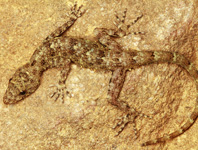Abstract
The monotypic ant genus Xymmer Santschi, 1914 was established for X. muticus (Santschi, 1914) which has so far been known only from the West African subregion. The genus is easily distinguishable from the other amblyoponine genera by the anteromedian part of clypeus which is produced as a short rectangular lobe. Additional undescribed species had been found exclusively from Madagascar and Africa until recently. However, in March, 2015, a Xymmer colony was found in northern Central Vietnam. In the present paper Xymmer phungi sp. nov. is described as the first Oriental species of the genus. Although the worker of X. phungi is morphologically quite similar to that of X. muticus, the former is distinguishable from the latter by the following two characteristics of the worker: clypeal lobe 1/6 times as long as broad (vs. 1/3 times as long as broad in X. muticus); anterior margin of the lobe weakly concave (vs. almost straight in X. muticus). Xymmer phungi is well distinguished from Ethiopian Xymmer spp. for which 28S sequences are available from GenBank. Our observations suggest that the species feeds on geophilids (Chilopoda: Geophilomorpha). An updated key to Vietnamese genera of the subfamily Amblyoponinae is also provided.
References
Bolton, B. (2003) Synopsis and classification of Formicidae. Memoirs of the American Entomological Institute, 71, 1–370.
Brown, W.L. Jr. (1949) A new American Amblyopone, with notes on the genus (Hymenoptera: Formicidae). Psyche, 56, 81–88.
http://dx.doi.org/10.1155/1949/67378Brown, W.L. Jr. (1960) Contributions toward a reclassification of the Formicidae. III. Tribe Amblyoponini (Hymenoptera). Bulletin of the Museum of Comparative Zoology, 122, 143–230.
Clark, J. (1934) New Australian ants. Memoirs of the National Museum, Victoria, 8, 21–47.
Donisthorpe, H. (1943) A list of the type-species of the genera and subgenera of the Formicidae. [concl.]. Annals and Magazine of Natural History, 11, 721–737.
http://dx.doi.org/10.1080/03745481.1943.9728055Edgar, R.C. (2004) MUSCLE: multiple sequence alignment with high accuracy and high throughput. Nucleic Acids Research, 32, 1792–1797.
http://dx.doi.org/10.1093/nar/gkh340Eguchi, K., Bui, T.V. & Yamane, S. (2014) Generic synopsis of the Formicidae of Vietnam (Insecta: Hymenoptera), Part II — Cerapachyinae, Aenictinae, Dorylinae, Leptanillinae, Amblyoponinae, Ponerinae, Ectatomminae and Proceratiinae. Zootaxa, 3860 (1), 1–46.
http://dx.doi.org/10.11646/zootaxa.3860.1.1Eguchi, K., Bui, T.V., Yamane, S. & Terayama, M. (2015) Redefinition of the genus Bannapone and description of B. cryptica sp. Nov. (Hymenoptera: Formicidae: Amblyoponinae). Zootaxa, 4013 (1), 77–86.
http://dx.doi.org/10.11646/zootaxa.4013.1.5Eguchi, K., Bui, T.V., Oguri, E. & Yamane, S. (2016) The first discovery of the “Pheidole quadricuspis group” in the Indo-Chinese Peninsula (Insecta: Hymenoptera: Formicidae: Myrmicinae). Revue suisse de Zoologie, 123, 45–55.
Emery, C. (1919) Notes critiques de myrmécologie. [I-IV.]. Annales de la Société Entomologique de Belgique, 59, 100–107.
Erichson, W.F. (1842) Beitrag zur Insecten-Fauna von Vandiemensland, mit besonderer Berücksichtigung der geographischen Verbreitung der Insecten. Archiv fuer Naturgeschichte, 8, 83–287.
http://dx.doi.org/10.5962/bhl.part.21656Forel, A. (1917) Cadre synoptique actuel de la faune universelle des fourmis. Bulletin de la Société Vaudoise des Sciences Naturelles, 51, 229–253.
Kimura, M. (1980) A simple method for estimating evolutionary rate of base substitutions through comparative studies of nucleotide sequences. Journal of Molecular Evolution, 16, 111–120.
http://dx.doi.org/10.1007/BF01731581Kumar, S., Stecher, G. & Tamura, K. (2016) MEGA7: Molecular Evolutionary Genetics Analysis Version 7.0 for Bigger Datasets. Molecular Biology and Evolution, 33 (7), 1870–1874.
http://dx.doi.org/10.1093/molbev/msw054Masuko, K. (1990) Behavior and ecology of the enigmatic ant Leptanilla japonica Baroni Urbani (Hymenoptera: Formicidae: Leptanillinae). Insectes Sociaux, 37, 31–57.
http://dx.doi.org/10.1007/BF02223813Masuko, K. (1993) Predation of centipedes by the primitive ant Amblyopone silvestrii. Bulletin of the Association of Natural Science, Senshu University, 24, 35–44.
Roger, J. (1859) Beiträge zur Kenntniss der Ameisenfauna der Mittelmeerländer. I. Berliner Entomologische Zeitschrift, 3, 225–259
http://dx.doi.org/10.1002/mmnd.18590030209Santschi, F. (1914) Formicides de l'Afrique occidentale et australe du voyage de Mr. le Professeur F. Silvestri. Bollettino del Laboratorio di Zoologia generale e agraria della R. Scuola superiore d’Agricoltura in Portici, 8, 309–385.
Saux, C., Fisher, B.L. & Spicer, G.S. (2004) Dracula ant phylogeny as inferred by nuclear 28S rDNA sequences and implications for ant systematics (Hymenoptera: Formicidae : Amblyoponinae). Molecular Phylogenetics and Evolution, 33, 457–468.
http://dx.doi.org/10.1016/j.ympev.2004.06.017Yoshimura, M. & Fisher, B.L. (2012) A revision of male ants of the Malagasy Amblyoponinae (Hymenoptera: Formicidae) with resurrections of the genera Stigmatomma and Xymmer. PLoS ONE, 7, e33225.
http://dx.doi.org/10.1371/journal.pone.0033325Ward, P.S. & Fisher, B.L. (2016) Tales of dracula ants: the evolutionary history of the ant subfamily Amblyoponinae (Hymenoptera: Formicidae). Systematic Entomology, 41, 683–693.
http://dx.doi.org/10.1111/syen.12186Wheeler, W.M. (1922) Ants of the American Museum Congo expedition. A contribution to the myrmecology of Africa. VII. Keys to the genera and subgenera of ants. Bulletin of the American Museum of Natural History, 45, 631–710.

